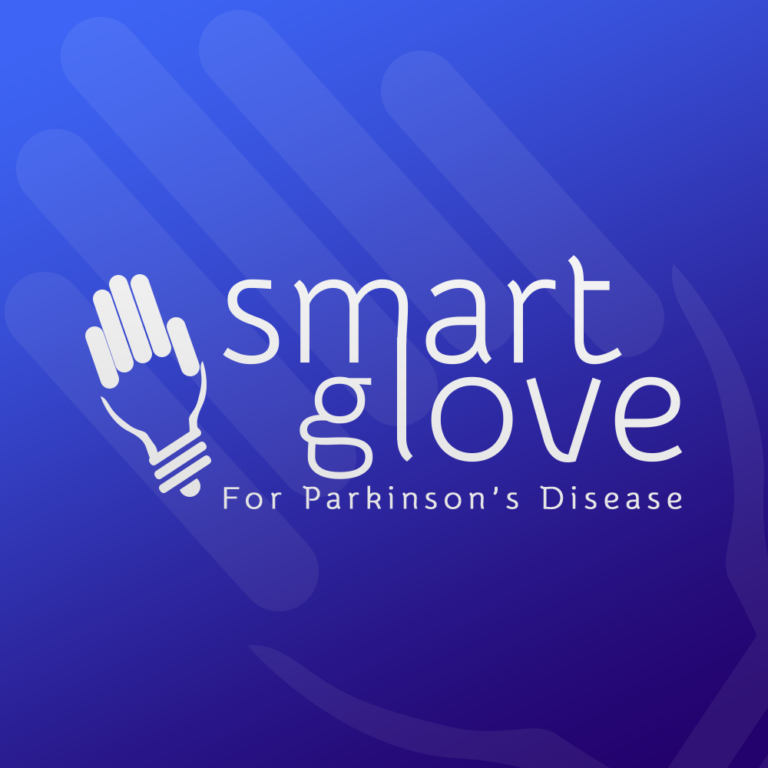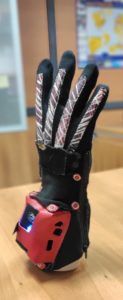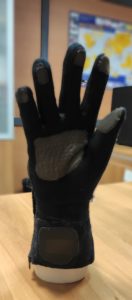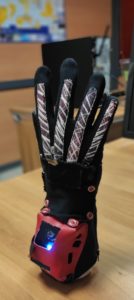
01. The Challenge & Solution
O
Parkinson’s disease (PD) is one of the most common neurodegenerative disorders in the world, affecting about 0.3% of the entire population and about 1% in people over 60 years of age. Early symptoms of the disease include motor impairments, such as tremor and bradykinesia, which are usually treated with L-Dopa (Levodopa). However, as Parkinson’s disease progresses, the L-Dopa treatment wears-off leading to larger drug doses in order to control the symptoms, which in turn can lead to more intense levodopa side-effects (e.g. drug-induced bradykinesia or dyskinesia), significantly reducing the patient’s quality of life. Research has shown that the best way to prolong the effectiveness of the L-Dopa, and hence improve patient’s life quality, is to highly regulate the dosages to the bare minimum required to control the symptoms, rendering the choice and control of the dosing regimen an extremely difficult and complex matter.
Physicians lack a tool that will objectively determine whether a change in dosing is effective in improving the symptoms of the disease. Up until now, a conventional treatment regimen is based on the objective discretion of the treating physician based on clinical observation is conducted for a short period of time, during a patient’s physical exam, usually for 10 to 20 minutes once every few months. However, an individual’s motor status fluctuates from day-to-day. Moreover, physicians are often forced to rely on the patient’s description and/or written diaries to gain an understanding of the patient’s ongoing motor status between clinical appointments (and the corresponding objective exam). In practice, however, patients are not able to objectively score their state, and the motor episodes themselves make it difficult for a patient to objectively and precisely record the nature and timing of motor episodes.
SmartGlove platform aims to eliminate the issues described above by continuously monitoring the progress of Parkinson’s disease in an individual and providing a precise evaluation of his/her motor symptoms. In addition, the platform will provide the physicians with the necessary tools to recognize and verify whether an adjustment to the drug dosage is required. The main idea is that remote health monitoring and motor status assessment of PD patients will provide essential information to the physician, who will be able to qualify them and provide the best personalized treatment to the patient. The motivation is based on the simple fact that the current clinical practice (short office visits and patient diaries) is insufficient to reveal the complete medical status of the patient.



02. Platform Description
SmartGlove aims at the development of a remote health monitoring system for Parkinson’s disease patients, based on a wearable device (glove), a patient-oriented mobile application, and a doctor-oriented Cloud platform.
- The wearable (SmartGlove) device will be used by the patient, according to his doctor’s instructions, in order to gather daily information about his motor status. It is equipped with multiple sensors including:
- piezoelectric sensors on the fingers to capture the individual finger movements,
- conductivity fibber on the fingertips and inside of the palm, to detect finger taping and fist closing, and
- an accelerometer placed on the wrist.
- The mobile application will be installed in a mobile device (smartphone or tablet) and its goal is to gather information from the wearable device, along with information inserted directly into it (smartphone/tablet sensors values, PD specific questionnaires filled from the patient, medication and diet information entered from the caregiver, etc).
- Finally, the mobile application will upload the gathered information to the Cloud application, where an automated assessment for bradykinesia will be generated based on the automated analysis of the recorded signals. Furthermore, the platform will act as a Decision Support System (DSS) and a patient management guidance service provider. The DSS services will focus on three main areas: (i) therapeutic suggestions, (ii) medical alerts, and (iii) additional medical data.
Our solution introduces a new concept in the management of chronic conditions that could lead to improved health outcomes and decreased healthcare costs. With our app-enabled device, access is no longer a problem because even patients in remote areas can have their symptoms captured and transmitted to specialists remotely. The patient can wear the glove and perform a series of standardized exercises at his/her home or office, 2-3 times per day, for less than 5 minutes. Consequently, the cloud platform will allow physicians to have a complete assessment of patient’s motor status and offer solutions for more effective disease management.
